Variable-access lanes
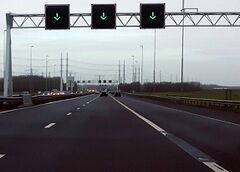
|
| Description |
| Special road traffic lanes that are opened and closed by traffic management |
| Group |
| Tags |
|
|
Variable-access lanes, including peak-hour lanes, are special lanes for road traffic that are designed to be opened and closed by traffic management.
How to map
Variable-access lanes are included in the number of lanes (lanes=*) and are marked in access:lanes=* by setting the lane value to variable. Further restrictions and other details about the lane can be added with the usual lane tagging.
If the lane is a "running hard shoulder", you should add shoulder=no, since the "running hard shoulder" is already included in the lane count and there is no shoulder next to the "running hard shoulder". However, sometimes there can be an actual shoulder next to the "running hard shoulder", in which case you should still use shoulder=right.
If known, more specific information about the circumstances when the lane is consistently open or consistently closed, may be added using conditional restrictions (access:lanes:conditional=*).
Examples
| Photo when open | Photo when closed | Tags on the way |
|---|---|---|
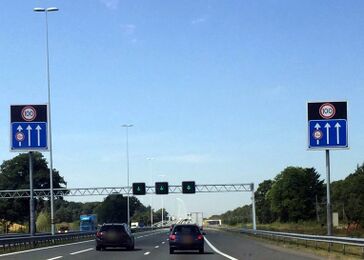
|
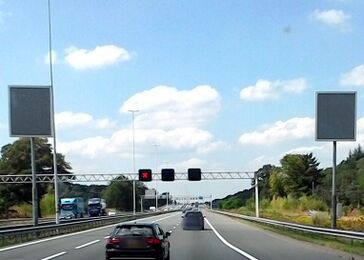
|
There is a peak-hour lane on the left, with width restriction. |
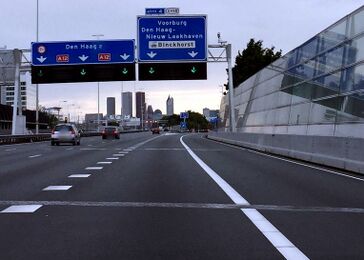
|
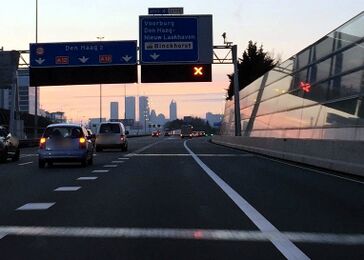
|
There is a peak-hour lane for the off-ramp on the right, replacing the hard shoulder.
|
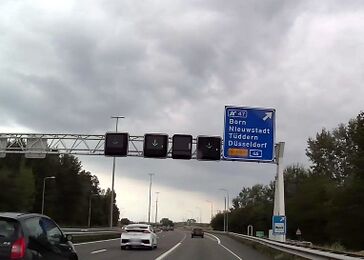
|
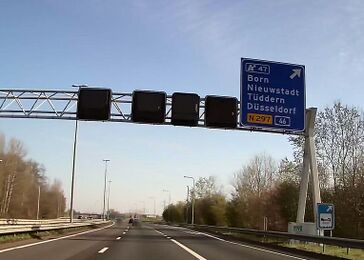
|
This short segment of the peak-hour lane on the right is never closed with a red cross, because otherwise the off-ramp would become unreachable. |
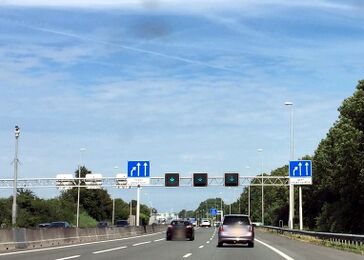
|
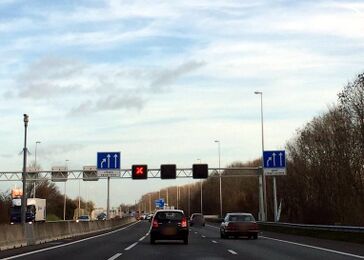
|
The peak-hour lane on the left ends. |
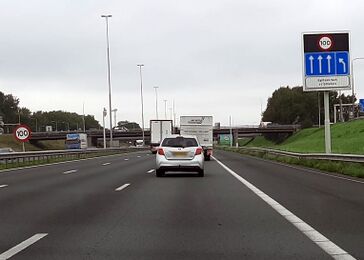
|
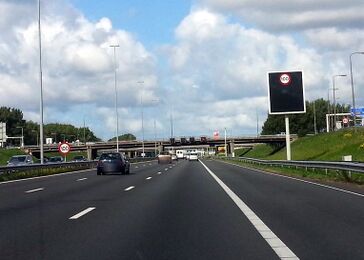
|
The peak-hour lane on the right ends. |
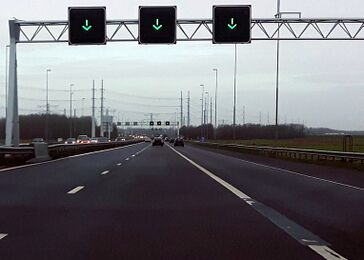
|
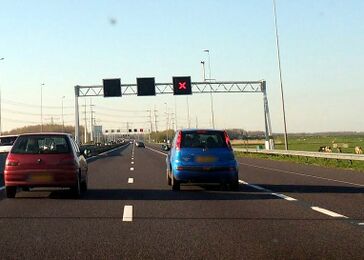
|
This road segment has a hard shoulder on the right next to the peak-hour lane on the right. |
Status
This tagging scheme originates from the Netherlands, where it is consistently used. [1]
Some possible alternative schemes are discussed on talk page, feel free to join the discussion.